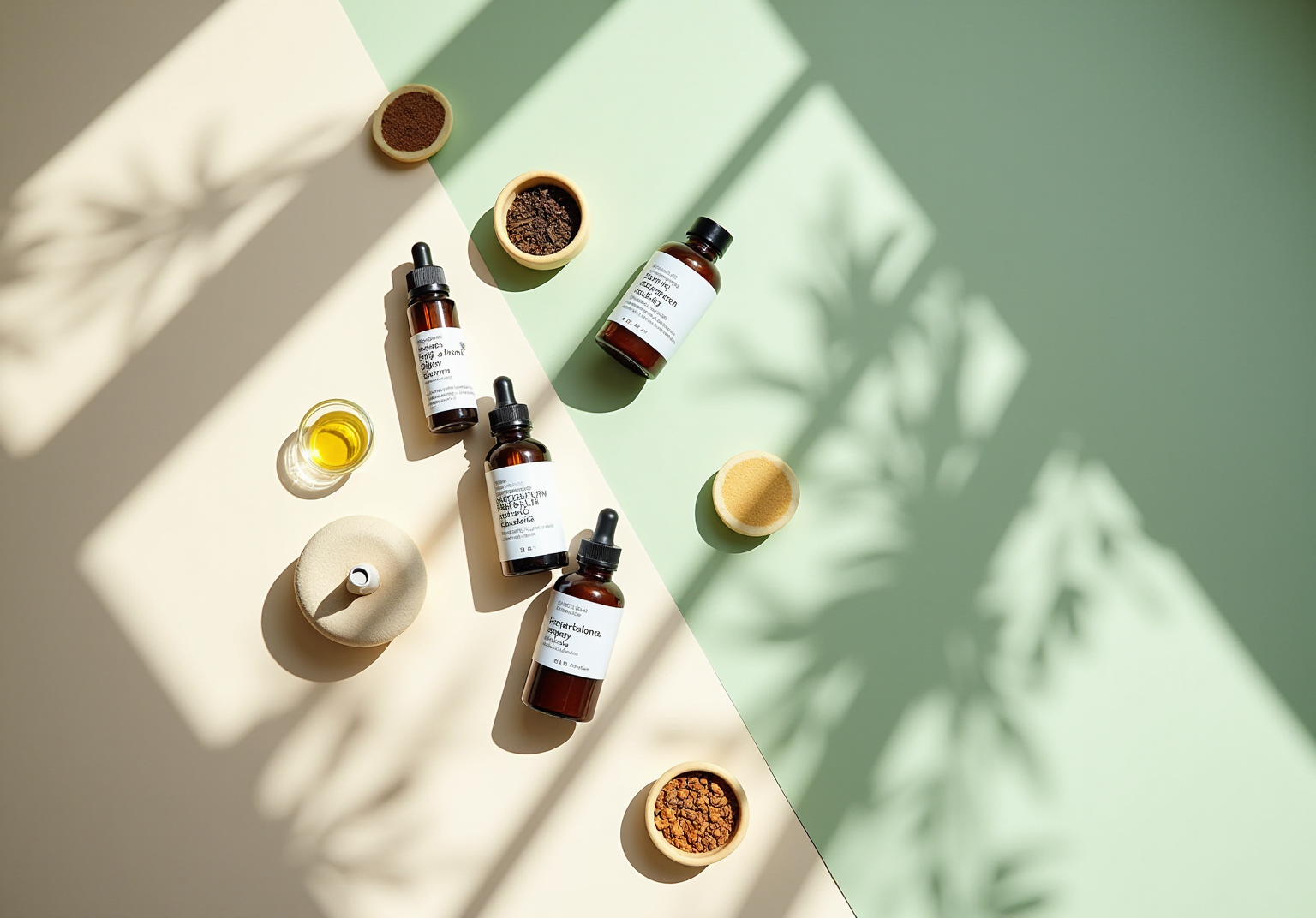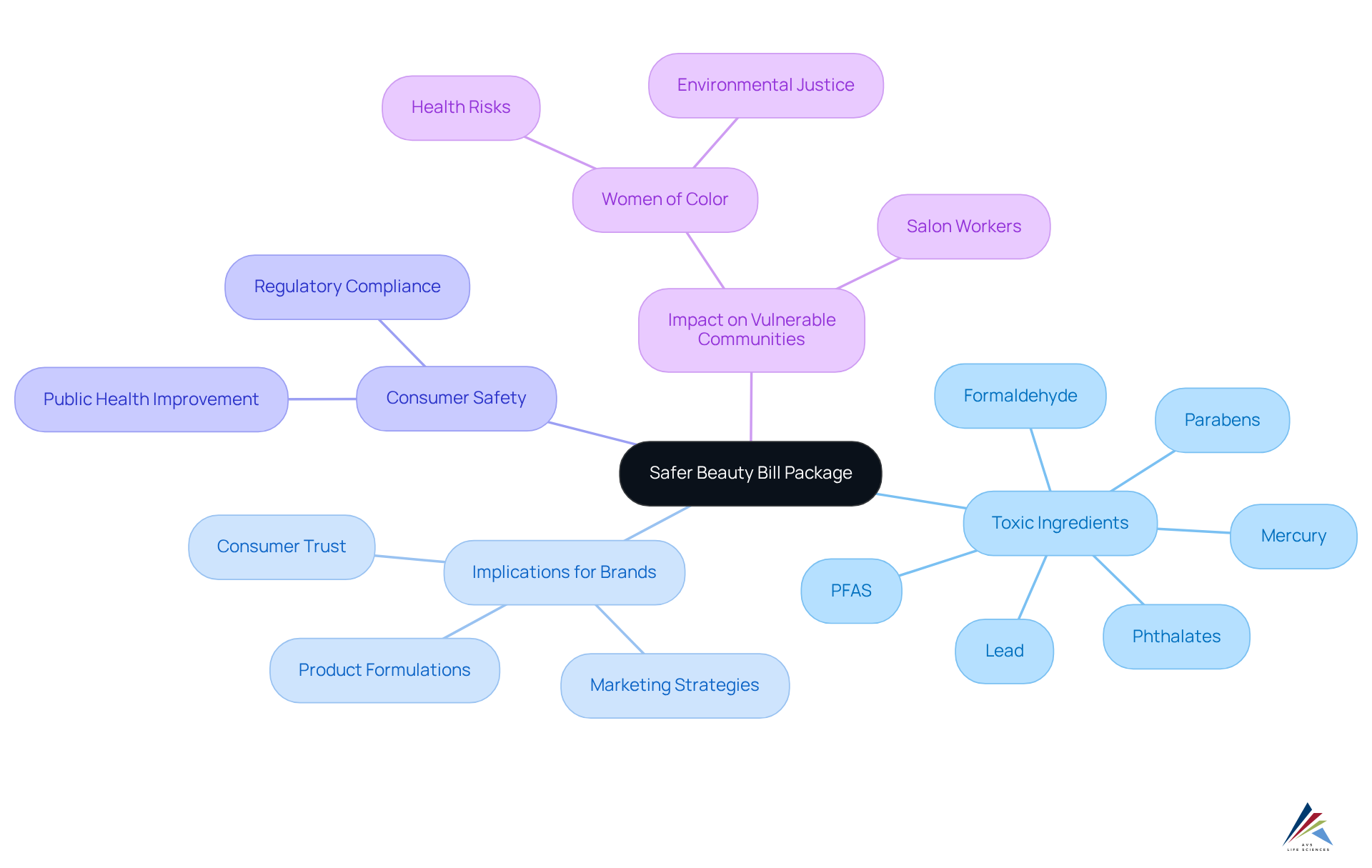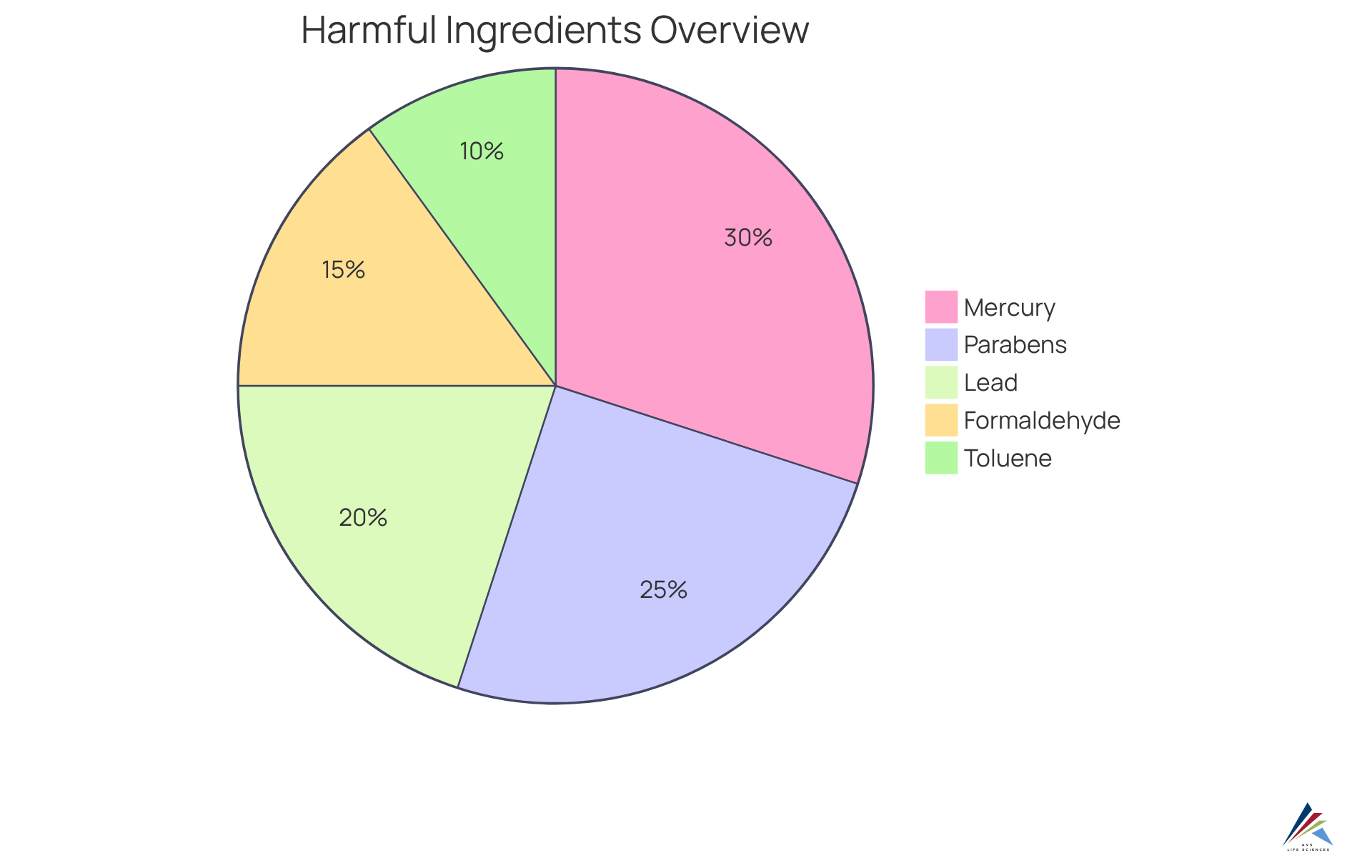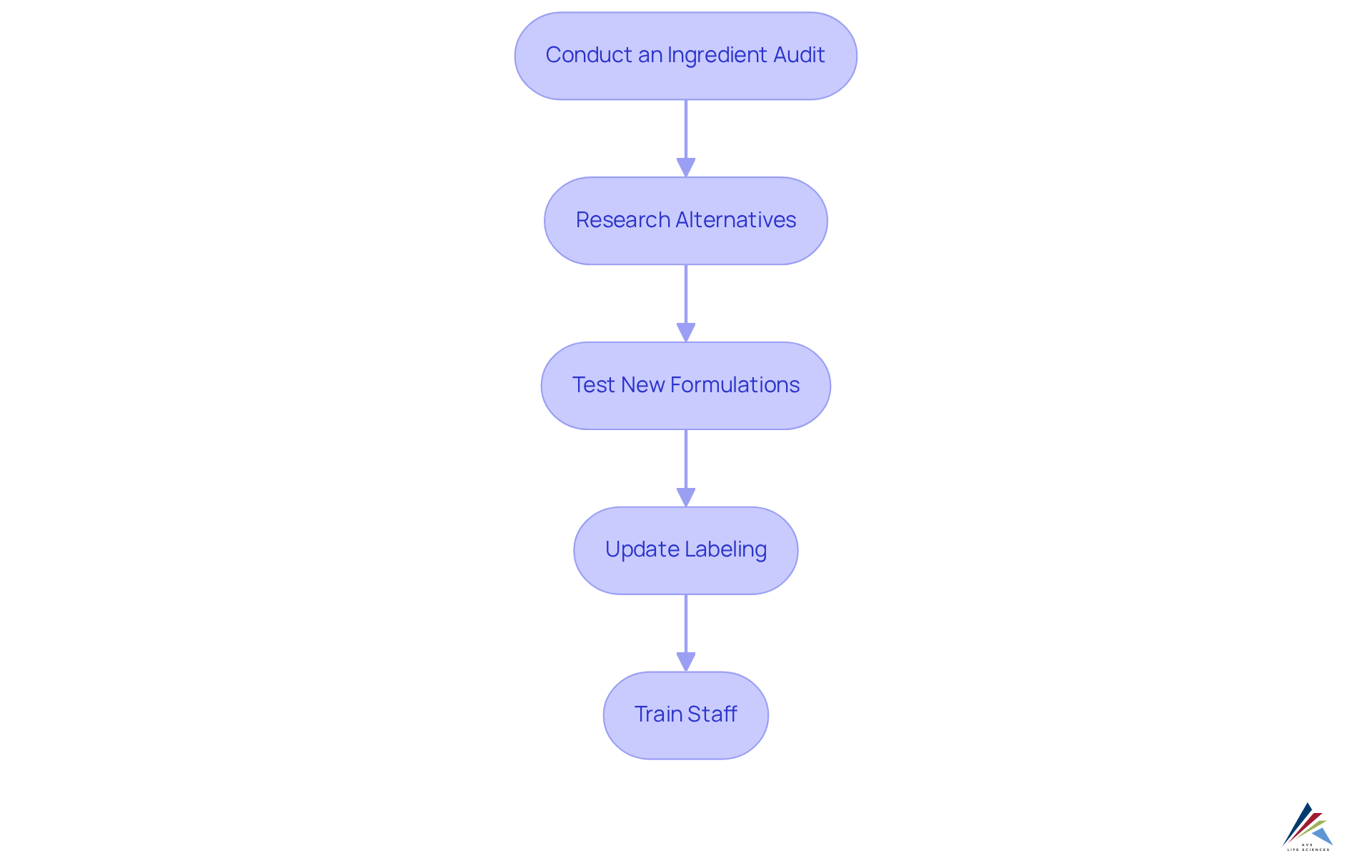Safer Beauty Bill Package: Ingredient Restrictions Brands Should Know

Overview
The Safer Beauty Bill Package introduces significant ingredient restrictions aimed at eliminating toxic substances from cosmetics, including mercury, parabens, lead, and formaldehyde, to protect consumer health, particularly vulnerable populations. Brands face substantial compliance challenges as they must adapt their formulations and practices to align with these regulations. This adaptation is not merely a legal obligation; it is a crucial step towards enhancing consumer safety and trust.
Furthermore, addressing health disparities linked to harmful chemicals in beauty products is imperative. By embracing these changes, brands can foster a more responsible beauty industry that prioritizes the well-being of all consumers.
Introduction
The Safer Beauty Bill Package signifies a pivotal transformation within the cosmetics industry, with a clear objective: safeguarding consumers from harmful ingredients that have long raised alarms. This legislation specifically targets toxic substances such as mercury and parabens, while also underscoring the imperative for brands to adapt their formulations, prioritizing safety and transparency.
As the compliance deadline looms, brands encounter the urgent challenge of reformulating products without compromising consumer trust. How can companies adeptly navigate these new regulations and fulfill the expectations of an increasingly informed market?
Understand the Safer Beauty Bill Package and Its Importance
The Safer Beauty Bill Package: ingredient restrictions brands should know is a pivotal legislative initiative aimed at eliminating the most toxic ingredients from cosmetics, such as mercury, parabens, lead, and formaldehyde. This package is crucial for safeguarding consumers, especially vulnerable groups such as women of color and salon workers who face a heightened risk of exposure to harmful chemicals.
A cornerstone of this package, the Toxic-Free Cosmetics Act, prohibits a broader range of harmful chemicals than any other state or federal law, encompassing PFAS, lead, phthalates, and formaldehyde-releasing agents, with enforcement set to commence in 2025 and 2026.
Understanding the : ingredient restrictions brands should know is vital for companies, as it directly impacts product formulations, marketing strategies, and consumer trust. As Washington State Representative Sharlett Mena aptly noted, "You shouldn’t have to be a toxicologist to shop for personal care products," underscoring the necessity for brands to prioritize safe ingredients.
Additionally, this legislation seeks to bolster public health and mitigate the disproportionate effects of toxic ingredients on marginalized communities, supported by research linking harmful chemicals in cosmetics to elevated health risks for women of color.
To ensure compliance and uphold their market reputation, brands must remain vigilant about the safer beauty bill package: ingredient restrictions brands should know. The proactive stance of this legislation highlights the critical importance of consumer safety and the imperative for brands to adapt accordingly.

Identify Toxic Ingredients Restricted by the Bill
The Safer Beauty Bill Package: ingredient restrictions brands should know bans 18 harmful chemicals and two complete categories of substances, significantly impacting formulations within the beauty sector. Key ingredients to avoid include:
- Mercury: Associated with severe neurological damage, mercury exposure can lead to symptoms such as tremors, cognitive impairments, and respiratory issues. Studies indicate that acute inhalation of mercury can result in life-threatening conditions, including pulmonary complications. Notably, among 104 workers examined 30 years after inorganic mercury exposure, the presence of resting tremors correlated significantly with prior cumulative mercury exposure. The FDA recommends that pregnant women, breastfeeding mothers, and young children avoid eating fish with (>1 ppm).
- Parabens: These preservatives have been linked to hormone disruption, raising concerns about their potential role in breast cancer and reproductive health issues. The FDA has noted that while parabens are commonly used, their safety continues to be scrutinized.
- Lead: Known for its toxic effects on the nervous system, lead exposure can result in developmental delays and cognitive deficits, particularly in children. The FDA has established a maximum impurity level of 20 ppm for lead in cosmetics, and draft guidance recommends a maximum lead impurity level of 10 ppm in cosmetic lip products and externally applied cosmetics, reflecting ongoing concerns about its presence in beauty products.
- Formaldehyde: Recognized as a carcinogen, formaldehyde can cause skin irritation and allergic reactions. Long-term exposure has been linked to respiratory issues and other serious health effects.
- Toluene: This solvent is harmful to the respiratory system and can cause neurological damage with prolonged exposure.
Brands must conduct a thorough review of their component lists to ensure compliance with the safer beauty bill package: ingredient restrictions brands should know, identifying any of these banned substances. Employing component databases and consulting with toxicology specialists can assist in guaranteeing adherence to the new regulations and protecting consumer health. Furthermore, it is essential to highlight that cosmetic firms are not obligated to disclose safety information or formulations to the FDA, which poses compliance difficulties for companies.

Implement Changes to Formulations for Compliance
Brands must adjust their offerings by removing restricted components to comply with the safer beauty bill package: ingredient restrictions brands should know. Follow these essential steps:
- Conduct an Ingredient Audit: Begin by reviewing all items to identify any banned substances.
- Research Alternatives: Seek safe and effective substitutes for the prohibited components. For instance, consider utilizing natural preservatives in place of parabens.
- Test New Formulations: Ensure that the revised formulations meet safety and efficacy standards through rigorous testing processes.
- Update Labeling: to accurately reflect the new component lists and ensure compliance with transparency requirements.
- Train Staff: Educate your team about the changes and the importance of compliance to maintain product integrity.
By following these steps, brands not only adhere to the safer beauty bill package: ingredient restrictions brands should know, but also bolster their commitment to safety and transparency in the beauty industry.

Utilize Resources for Effective Compliance Management
To effectively manage compliance with the Safer Beauty Bill Package, brands can leverage a variety of essential resources:
- Regulatory Compliance Software: Tools such as Coptis and Cosmedesk are invaluable for tracking ingredient compliance and managing necessary documentation, streamlining the compliance process. AVS Life Sciences offers tailored software solutions that can further enhance tracking and reporting capabilities.
- Industry Associations: Groups such as the Personal Care Products Council play an essential role by offering prompt updates on regulatory changes and sharing best practices that improve adherence rates throughout the sector. AVS Life Sciences collaborates with these associations to ensure clients are always informed.
- Consulting Services: Working with regulatory specialists provides customized advice, assisting brands in maneuvering through the intricacies of the new regulations effectively. AVS Life Sciences offers specialized consulting services that can greatly enhance regulatory outcomes.
- Training Programs: Enrolling staff in specialized training sessions centered on regulatory and safety standards ensures that all team members are well-informed and prepared for the upcoming changes, fostering a culture of adherence within the organization. AVS Life Sciences also offers training programs designed to meet the specific needs of the beauty industry.
By utilizing these resources, brands can not only meet regulatory requirements but also enhance their overall compliance strategies concerning the safer beauty bill package: ingredient restrictions brands should know, positioning themselves as leaders in the beauty industry.

Conclusion
The Safer Beauty Bill Package marks a pivotal advancement in safeguarding consumers from harmful chemicals in cosmetics. By instituting stringent ingredient restrictions, this legislation seeks to establish safer beauty products for all, particularly focusing on vulnerable populations disproportionately impacted by toxic substances. Brands must acknowledge the urgency of reformulating their products to comply with these new regulations, not only to protect consumer health but also to uphold their credibility in an increasingly dynamic market.
Key points throughout the article underscore the specific toxic ingredients banned under the bill, including:
- mercury
- parabens
- lead
- formaldehyde
The imperative for brands to perform comprehensive ingredient audits, explore safe alternatives, and revise product labeling emerges as essential steps toward compliance. Furthermore, utilizing resources such as regulatory compliance software and consulting services can significantly enhance a brand's capacity to navigate these changes effectively.
Ultimately, the Safer Beauty Bill Package serves as a clarion call for the beauty industry to prioritize consumer safety and transparency. By adopting these regulations, brands not only meet their legal responsibilities but also cultivate trust with their customers, fostering a healthier future for all. The commitment to reformulating products and adhering to these new standards can set a precedent that encourages innovation and responsibility within the beauty sector, paving the way for a safer and more informed beauty landscape.
Frequently Asked Questions
What is the Safer Beauty Bill Package?
The Safer Beauty Bill Package is a legislative initiative aimed at eliminating toxic ingredients from cosmetics, such as mercury, parabens, lead, and formaldehyde, to protect consumers, particularly vulnerable groups.
What are some key components of the Safer Beauty Bill Package?
A key component is the Toxic-Free Cosmetics Act, which prohibits a wide range of harmful chemicals, including PFAS, lead, phthalates, and formaldehyde-releasing agents, with enforcement starting in 2025 and 2026.
Why is the Safer Beauty Bill Package important for consumers?
It is important for consumers as it aims to safeguard public health by reducing exposure to harmful chemicals, particularly for marginalized communities who are disproportionately affected.
How does the Safer Beauty Bill Package affect cosmetic brands?
The package impacts cosmetic brands by requiring them to adjust product formulations and marketing strategies to comply with new ingredient restrictions, which is essential for maintaining consumer trust and market reputation.
What is the significance of the statement by Washington State Representative Sharlett Mena regarding the Safer Beauty Bill?
Representative Mena's statement emphasizes that consumers should not need specialized knowledge to choose safe personal care products, highlighting the necessity for brands to prioritize safe ingredients in their offerings.
What are the potential health risks associated with toxic ingredients in cosmetics?
Research has linked harmful chemicals in cosmetics to elevated health risks, particularly for women of color, underscoring the need for legislation like the Safer Beauty Bill Package to mitigate these risks.
